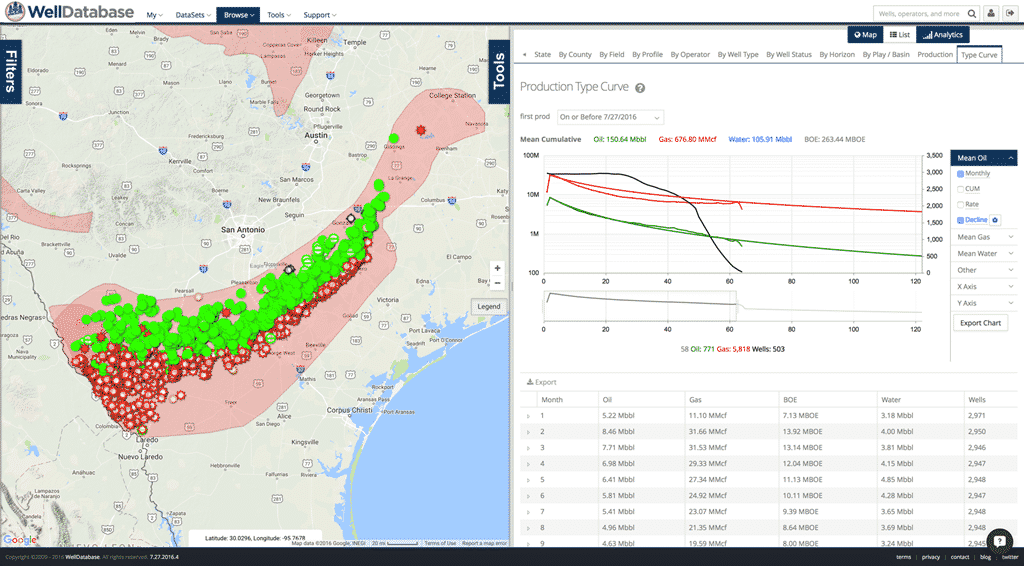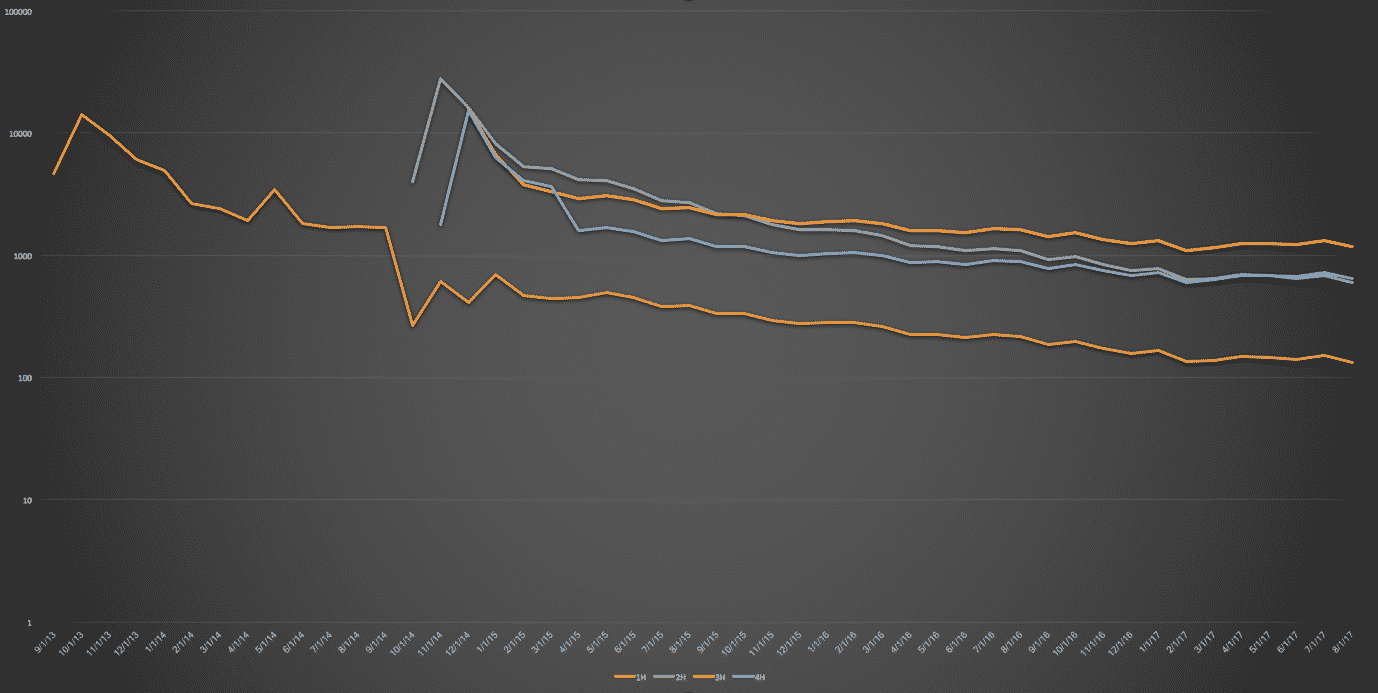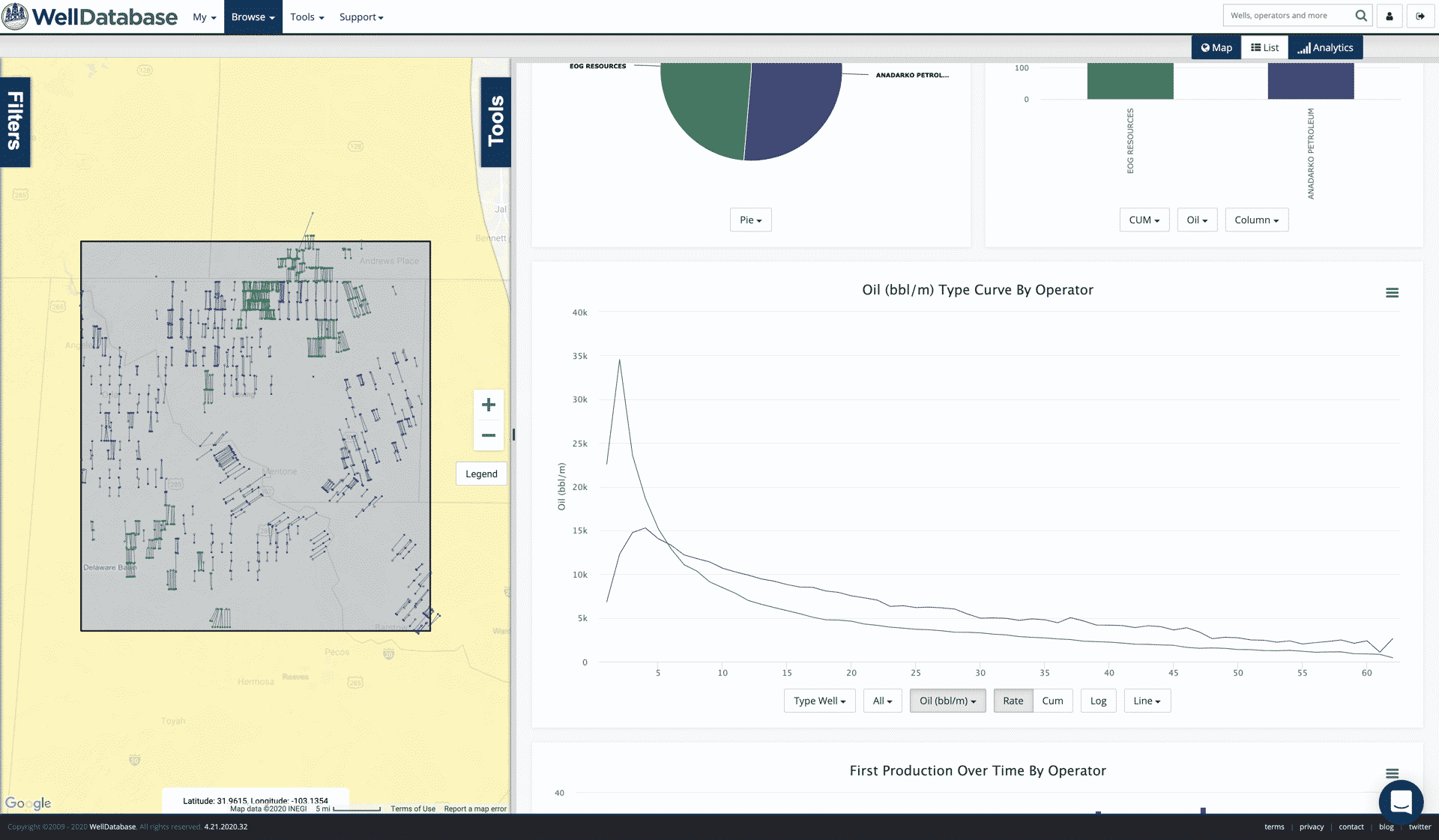Texas Production Allocation – Case Study
Allocating production from the lease level to the well level in the state of Texas can be a challenge. There are a limited number of hard data points...
You need data. You need mapping. You need tools to analyze that data. Now you can do everything in a single, easy to use platform.
Perfect for users who need access to basic well level data. If you're only interested in a few wells and currently use state sites, this plan is for you.
The industry didn't start with unconventionals and neither does our data. We cover the full historical dataset across every producing state and province. Don't settle for inferior data, check out our coverage for any state or province you're interested in.


We get asked all the time about the method we use to allocate Texas production data. For those who might not know, Texas requires operators to report production on a lease level. This means we have to take a stab at dividing the production up between all wells included in the lease. Anyone who has tried it before knows that it may sound simple, but the reality is quite another story. For this post, we’ll outline the basics of what we do. We will follow up with several more posts of details for those who want all the info.
First, there are three types of leases in Texas
Second, let’s lay out all the pieces of data we have to work with:
With that set up, let’s step through the process we take to allocate the data.
For each well in the lease, we prep the data using the following steps:
Step 1 – Establish start and end dates for each well.
A well can’t produce prior to its completion and cannot produce after it is plugged. That’s easy, but we also must make sure the well has not been re-completed on a different lease at some time. A well can’t produce on two leases, right….right? Ok, that will be covered in more detail later. The goal is a start and stop date for the well. Done.
Step 2 – Identify any production values that relate to a single well
There are two scenarios where we can associate reported production to a single well. First there are wells with only one well producing for a particular month. Those are easy. The second is the pending lease production report. Every record in the pending lease report is associated to a drilling permit. Something that we grab daily from the RRC. Like everything, there are caveats with that data. That again will be a topic for another day.
Step 3 – Set up the test data to be useful
Test data cannot be used to directly determine volumes. There is too much variability in the way wells are tested. A single 24-hour test period is not indicative of the capability of a well for an entire month. We utilize test data to create a model of decline for the well life. To do this we generate a best fit decline curve on the test data points. This process is not straightforward, but again, more details later.
Step 4 – Set up the allowable data to be useful
Allowable data was the primary ingredient of our allocation process in the beginning. It is one of the only values reported each month on a well by well basis. Using this data directly for allocation has issues though. We can talk about those again later. For these purposes, we will decline the allowable data in the same way we handled the test data.
Now that everything is prepared, we can allocate the production. To do this, we step through the data month by month starting at the first production. For each month of production, we do the following:
Step 1 – Identify known values
Many leases start with known values. Sometimes it is the first well on the lease producing for a period. Sometimes it’s pending lease production data. Regardless, the first step is to assign these known values. If there are a mix of wells with known values and wells with unknown values, we then remove those volumes from the lease volume. That way we are working with the total volume for the unknown wells.
Step 2 – Pick the allocation method and allocate
Do we have test data for every well for this month?
By creating the test decline above, we have test values for each month from the first test date. If we have a valid test decline number for each well in the current month, we will use those. We do not use the raw test decline values though. We start by taking the sum of the test decline values for the month. Then we assign a weight to each well based on its percentage of the total test value. Last we apply that percentage to the lease volume and we’re good.
This is the preferred method and used whenever possible. It the only method that is based on actual reported data with minimal interpretation.
Ok, we don’t have test data. Does each well have enough allocated production to create a decline?
If we have enough history to work with, we’ll create a decline curve for every well in the lease for this period. This procedure uses a “best fit” method that is another topic to write about later. As with the test data, we cannot just use those raw values. We follow the same procedure and give each well a weight based on the percentages of the whole lease. Then apply that weight to the lease volumes and move to the next month.
We don’t have test data or enough production to decline. What if all but one well has a decline?
In this case, we can no longer use the weighted procedures above, but we can still work with it. We’ll take those values we’ve projected for the current month and apply those. Then we take what is left over and apply that to the well that we can’t decline. This will not work if the projected decline total is greater than the reported lease production. That is something that does happen and another topic for a separate post.
What if we have a good mix of wells with production declines and wells we cannot decline?
In this scenario, we can do something similar to what we did above. Instead of assigning the leftover production to the a well, we’ll divide it amongst the remaining wells. We don’t get too cute with this division, but we do take into account the number of days producing. This means that a well that was completed with three days remaining in a month will get less production than a well that produced all month.
And if all else fails….
If every other situation fails, we allocate the data by dividing the production. Like above, we take into account the number of producing days. That is the limit of the intelligence put into the calculation at this stage. This typically happens when multiple wells come online in the same month and do not have test data.
What about that allowable data?
As I said earlier, we previously relied heavily on the allowable data and it seemed to work great. Well, it did until it didn’t. Cases started to appear where allowable data wasn’t lining up well with any kind of logic. There were also cases where allowables were being set to zero due to paperwork alone. These were not actual shut-in situations, so the allocations were not correct. We continue to database the allowable data for future use. As of now we are not using it in our allocation procedures.
Conclusion
The beauty of this process allows us to iterate over the months of production and make adjustments as needed. As more data becomes available, we use it. As more wells come online, we account for it. And as additional tests are added, we adjust the entire model of the well so that it lines up.
If you have made it this far, I applaud your attention span. I swear I tried to make this as concise as possible. Please feel free to shoot over thoughts and comments. We appreciate any feedback.

Allocating production from the lease level to the well level in the state of Texas can be a challenge. There are a limited number of hard data points...

We’ve been discussing all things production and how they pertain to the current market. If you haven’t read the first parts yet, here are the links

WellDatabase and NuTech Energy Alliance, LTD are proud to announce the allignment of their platforms to combine the best interpreted subsurface...